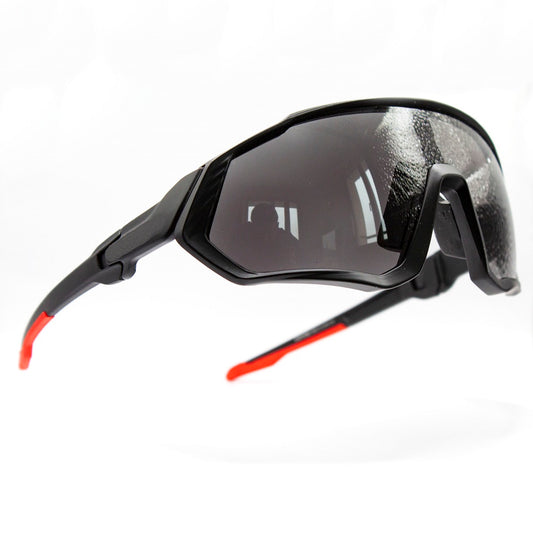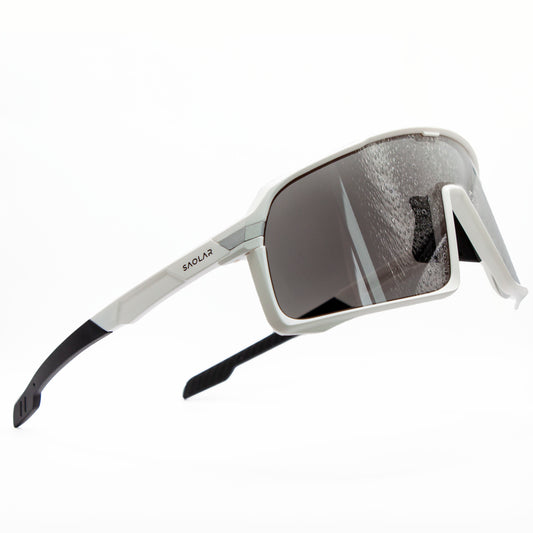How to Reduce Lower Back Pain when Mountain Biking ?
Mountain biking is an exciting physical activity. It is a great way to experience nature and the thrill of riding. But sometimes, back pain can also occur. Does this mean you have to put the bike away? The answer is no. You can reduce back pain with some simple gestures and attention. By following our tips, you can continue to enjoy your favourite sport without fear of back pain. Here's how to do it.
What Causes Lower Back Pain?
While cycling boasts numerous health benefits, is biking good for lower back pain?
Biking can be good for lower back pain when done correctly and with proper attention to form. Cycling is a low-impact exercise, meaning it puts less stress on the joints compared to high-impact activities like running.
However, if you experience pain, identifying the factors contributing to this discomfort is essential in developing strategies on how to avoid back pain while riding a bike. Cyclists' primary causes of lower back pain include ill-fitting bicycles, insufficient self-care, physical injuries, and improper riding techniques.
Fitting Bicycle
An improper bike fit is a prevalent cause of lower back pain. Cycling on a bicycle not correctly adjusted to a rider's body dimensions can lead to discomfort and long-term issues. Making minor alterations, such as changing the seat post's height, modifying stem length, or switching to a different bike size, can significantly improve ride comfort.
Insufficient Self-Care
A lack of attention to one's physical well-being off the bike can exacerbate lower back pain. Mountain biking and road cycling demand back flexion and hip flexor activation, which can strain the lower back if not counterbalanced by appropriate off-bike exercises. Incorporating a back extension exercise and hip flexor stretches into a daily routine may help alleviate and prevent discomfort on and off the bike.
Physical Injuries
Various physical injuries and conditions can also contribute to mid-back pain. Cycling with existing issues such as bulging or herniated discs, spinal stenosis, muscle strains or tears, arthritis, and sciatica may lead to discomfort during and after cycling.
Improper Riding Techniques
Adopting aggressive riding positions, such as leaning too far forward on a road bike, can place undue strain on the lower back muscles. Furthermore, tight hip flexor and hamstring muscles can negatively impact the lower back and cause pain. Being mindful of riding posture, technique, and muscle flexibility can help to minimise middle back pain cycling problems.
So, is bike riding good for lower back pain? While it may be hard to determine, by understanding and addressing the causes of lower back pain, cyclists can work towards a more enjoyable and pain-free riding experience.
However, there are some tips and techniques on how to avoid back pain while riding a bike that can help alleviate discomfort.
How to Avoid Back Pain while Riding a Bike
As cyclists aim for a more enjoyable and pain-free riding experience, many are left wondering, “Can I cycle with lower back pain?”
In this section, we will delve into various tips and techniques regarding how to avoid back pain while riding a bike. Following these suggestions can help alleviate discomfort and enhance your overall cycling performance.
Adopt the Right Posture on the Bike
The first thing to do to prevent back pain when riding a mountain bike is to take into account your position on the bike. This starts when you buy your bike. The choice of a mountain bike should not be taken lightly. And no, not all bikes are alike. In addition to the size, you should also consider the compatibility of the bike with your activity and your body type to avoid back problems. It is only natural that you should try out your bike before you buy or rent it.
Once you have purchased your mountain bike, check all the settings to keep your back as straight as possible. Adjust the saddle. Normally it should be horizontal. However, you can also lean it forward 10° if you have a history of back pain. For the height, make sure your legs are not too straight. Next, you need to adjust the height of the stem. Ideally, it should be 10 cm above the saddle. But it is up to you to see what suits you best to relieve back pain.
Also, good posture may not be enough to prevent back pain if you have to endure painful vibrations and shocks. Check the suspension of your mountain bike. Also, choose a saddle with firm padding to absorb shocks on rough terrain and prevent back pain.
Of course, it would be better not to venture out into the wilderness if you suffer from back pain. Prefer smooth terrain first, until you have fully recovered.
Choosing the Right Accessories to Prevent Lower Back Pain
As with any physical activity, you should be careful in choosing the accessories you use when mountain biking. This will help to reduce painful sensations in the lower back area.
First, you need the right shoes for a bike ride. Even for a simple ride in the city, you can't afford to wear just any shoes. In this case, soft rubber soles will do. For a mountain bike ride, however, you will need a completely different type of shoe. For this, you need shoes with rigid soles and studs to maintain stability while pedalling.
The choice of backpack is also important for a cycling activity. Ideally, you should carry nothing at all so as not to impede your movements. But sometimes it's the long trips that make cycling so attractive. So you can't do without a pannier to hold all your stuff. However, make sure it is light so that it does not overload your lower back. Also, choose a backpack with a strap to keep it in place. And take a bag with padded shoulder straps for more comfort in the shoulder area. However, there are also mountain bikes with luggage racks to give you full freedom of movement.
Do Complementary Exercises
Cycling involves a number of muscles: arms, shoulders, thighs, legs and back. And as with all muscle work, it is important to warm them up beforehand to prevent tearing and soreness. So, start each mountain bike session with a short run. After that, only start the steep climbs when you are well warmed up.
At the end of each session, don't forget to do some stretching to relax your muscles. You should wait until the next day to do the big stretches. You can do this by practising yoga. There are several positions to relieve your back. But it is also an activity you can do on a daily basis.
Although cycling is one of the most complete sports activities, it is not enough. Cycling only works the large muscles. There is therefore a risk of muscle imbalance, such as the small muscles of the vertebrae not being used as they should be. This is why you need to do other muscle-strengthening exercises. There are several options: pilates, swimming, rowing, etc.
Adjust Saddle Height and Angle
Ensuring your saddle is at the appropriate height and angle can help alleviate lower back pain when cycling.
A too-high or too-low saddle can lead to improper weight distribution and cause strain on your lower back. Experiment with slight adjustments to find your body's most comfortable and efficient position.
Strengthen your Core
A strong core is essential for maintaining proper cycling posture and preventing cycling back pain. Incorporate core-strengthening exercises like planks, bridges, and abdominal work into your regular fitness routine to improve stability and support your back during rides.
Pay Attention to Handlebar Positioning
Adjusting the height and reach of your handlebars can significantly impact your comfort while cycling. If your handlebars are too low or too far away, you may experience strain on your lower back. Experiment with different positions to find a comfortable and ergonomic setup that allows you to maintain a neutral spine.
Use Proper Gearing and Cadence
Maintaining a suitable gear and cadence can help prevent undue stress on your lower back. Avoid pushing excessively high gears or grinding up hills, as this can fatigue your glutes and hamstrings, leading to back pain. Aim for a consistent and efficient rhythm to minimise strain on your lower back muscles.
Stretch Regularly
Incorporate stretching exercises into your daily routine, focusing on the hip flexors, hamstrings, and lower back muscles. Regular stretching can help improve flexibility, reduce muscle tightness, and alleviate lower back pain associated with cycling.
Warm-up Before Cycling
If you’re looking for an easy way to ease the after-effects of MTB lower back pain, start by getting your heart pumping. Warming up before a ride can help prepare your muscles for the exertion and minimise the risk of injury. Start with gentle movements and gradually increase your intensity to condition your lower back and the rest of your body for the cycling session.
Monitor your Cycling Position Over Time
As your fitness and flexibility improve, your optimal cycling position may change. Periodically reassess your bike fit and make adjustments as necessary to ensure continued comfort and efficiency during rides.
Take breaks and change positions: During long rides, take breaks to stand up, stretch, and move around. Changing positions periodically while cycling can help prevent muscle fatigue and reduce the strain on your lower back.
Balance your Training
Incorporate a mix of high-intensity and low-intensity sessions into your training routine to avoid overtaxing your lower back muscles. Balancing your training can help prevent injury and allow your body to recover more effectively between rides.
Utilise an Inversion Table
An inversion table can help alleviate lower back pain by decompressing the spine and stretching the back muscles. By hanging upside down, you can counteract the effects of gravity, which may have caused compression in your spine from cycling. Use an inversion table cautiously and follow the manufacturer's instructions to avoid any potential injuries.
Invest in a Standing Desk
Incorporating a standing desk into your workspace can help reduce sitting time, which may contribute to lower back pain. Prolonged sitting can lead to muscle imbalances and poor posture, which can exacerbate lower back pain from cycling. By alternating between sitting and standing throughout the day, you can help maintain better posture and reduce the risk of developing back pain.
Consult a Medical Professional to Relieve Persistent Back Pain
A temporary backache is not a big deal. You can relieve the pain with stretching and a little rest. On the other hand, chronic low back pain should be taken more seriously. It is probably a sign of a more serious problem. In this case you should consult a doctor.
Physiotherapy is the best-known treatment for back pain. It is about correcting the bad posture that causes back pain. Depending on the severity of the back pain, you will get more or less long sessions. The therapy can last two weeks or several months. You can also use massage therapy, which is effective in relieving back pain.
The doctor may also recommend orthopaedic aids to relieve back pain. The lumbar belt is the best way to treat low back pain. At first you will have to wear it every day. When you feel better, you can wear it on demand, sometimes for a bike ride.
With any physical activity, you have to listen to your body. You should adjust the intensity of your mountain biking to prevent back pain. Also, good posture, the right techniques and the right accessories optimise the efficiency of your sport. Otherwise, instead of taking care of your body, you risk getting the opposite effect.








